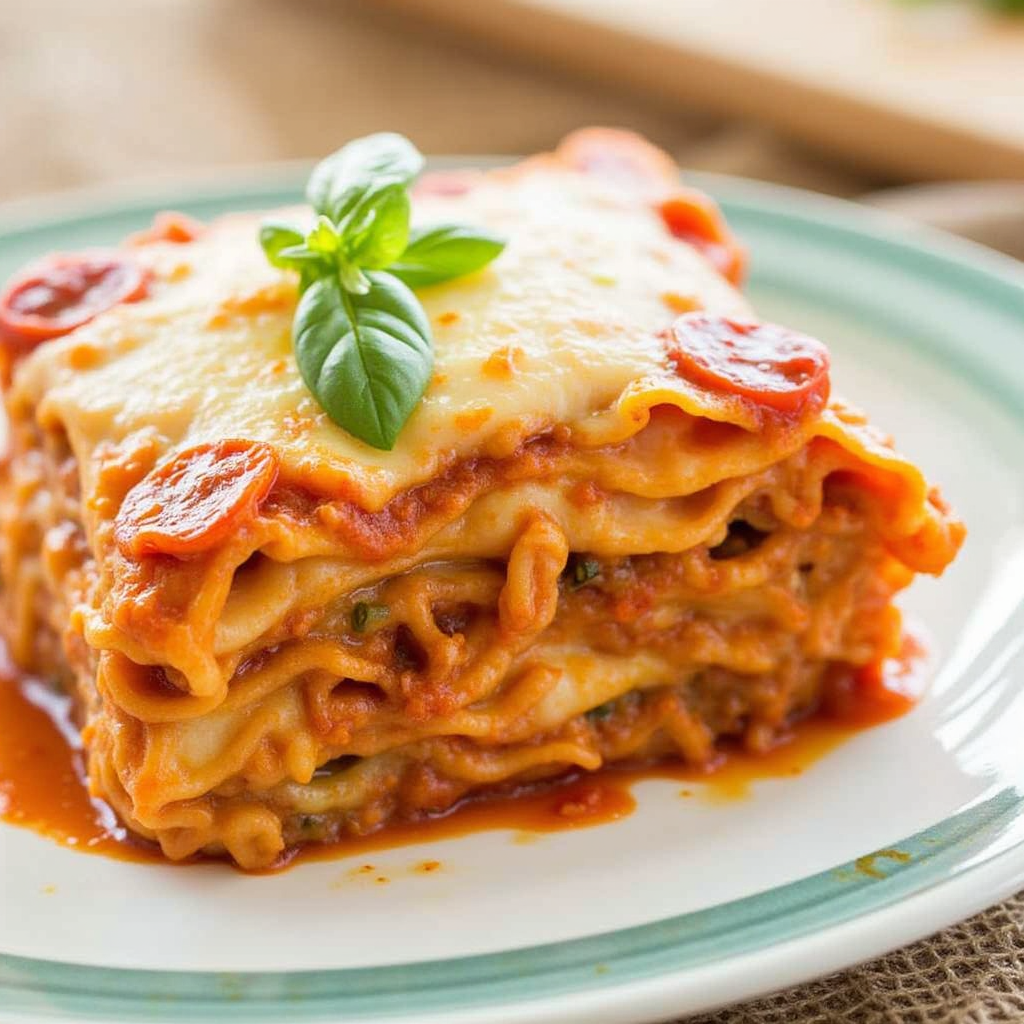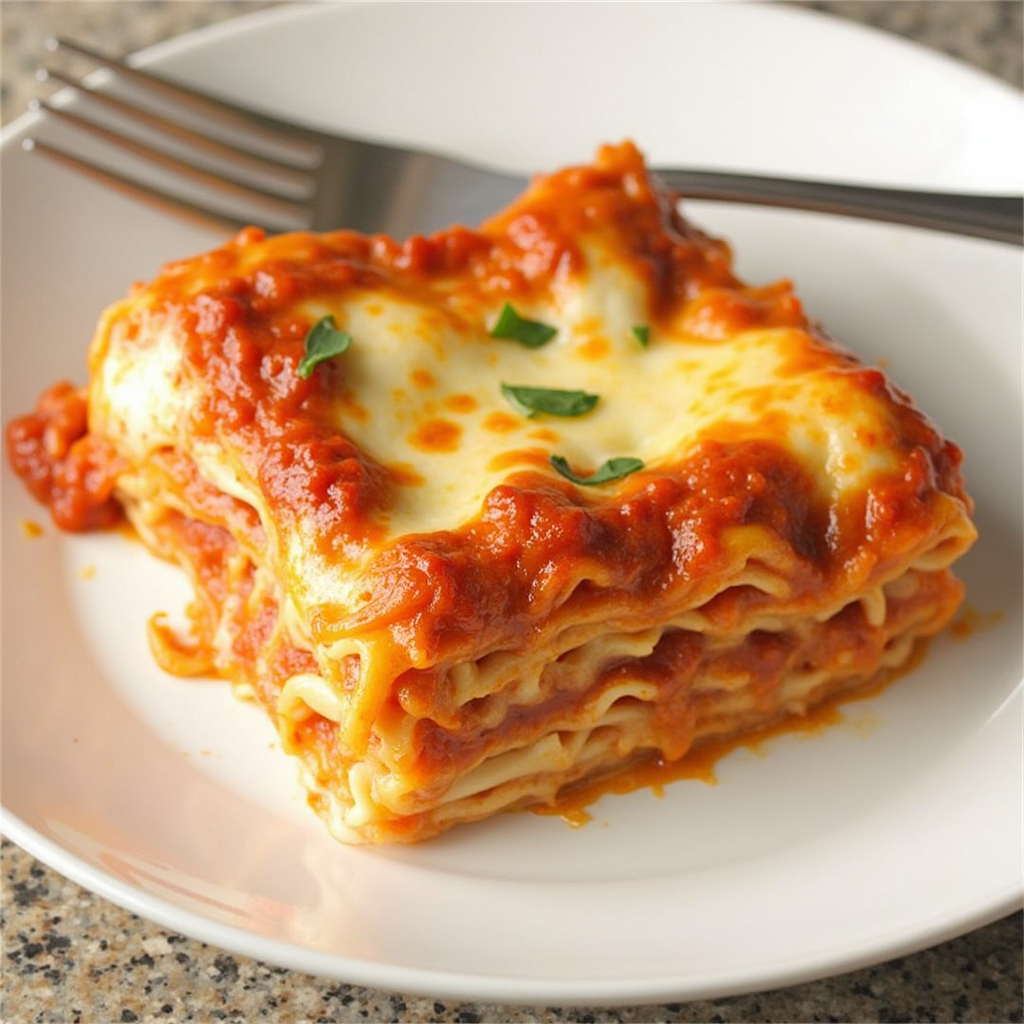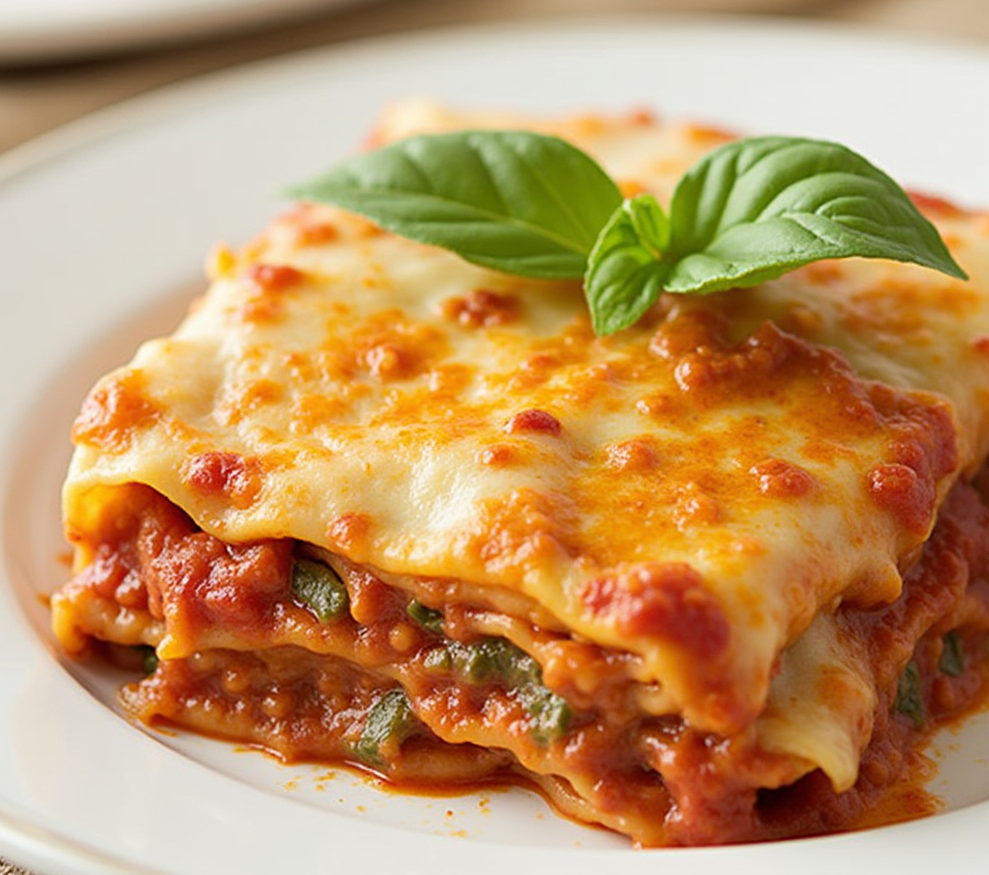Few dishes bring as much warmth and nostalgia as classic homemade lasagna. This beloved Italian staple has been cherished for generations, offering a hearty and satisfying meal for any occasion. Whether enjoyed at a family gathering or a cozy dinner, its layers of tender pasta, rich sauce, and creamy cheese create an unforgettable experience.
What makes classic homemade lasagna truly special is its balance of textures and flavors. Each bite delivers a comforting combination of savory meat, tangy tomato sauce, and melted cheese, all wrapped in delicate pasta sheets. The slow baking process allows the ingredients to meld beautifully, resulting in a dish that is as indulgent as it is satisfying.
From its historical roots to the precise layering techniques, mastering classic homemade lasagna requires an understanding of its essential components. By following time-honored methods and using quality ingredients, anyone can create a lasagna that embodies the essence of traditional Italian cooking.
The History and Origins of Lasagna
The origins of classic homemade lasagna date back centuries, with deep roots in Italian culinary traditions. While many associate it with modern Italian cuisine, its history is far older, with references to layered pasta dishes appearing in ancient Roman and Greek texts. These early versions used flatbread-like sheets instead of the pasta we recognize today.
During the Middle Ages, lasagna evolved into a more structured dish, particularly in Italy’s Emilia-Romagna region. The development of pasta-making techniques allowed cooks to create the smooth, thin layers essential for classic homemade lasagna. With the introduction of tomatoes to Europe in the 16th century, the dish further transformed, incorporating rich tomato-based sauces that enhanced its depth of flavor.
Over time, classic homemade lasagna became a staple in Italian households and eventually spread worldwide. Each region of Italy developed its own variation, some using béchamel sauce instead of ricotta, while others incorporated seafood or vegetables. Today, lasagna remains a symbol of tradition, comfort, and culinary excellence.
Essential Ingredients for a Perfect Lasagna
Creating classic homemade lasagna requires high-quality ingredients to achieve a balanced and authentic taste. Every component plays a crucial role in delivering the dish’s signature texture and flavor.
Key Ingredients:
- Lasagna noodles – Traditional pasta sheets provide the structure for layering.
- Meat sauce – A slow-simmered mixture of ground beef, pork, or sausage with tomatoes, garlic, and herbs.
- Cheese blend – Ricotta, mozzarella, and Parmesan create a creamy and rich consistency.
- Tomato sauce – A well-seasoned base that binds the layers together.
- Seasonings – Basil, oregano, and black pepper enhance the sauce’s complexity.
- Eggs – Used to bind the ricotta mixture for a firm yet creamy texture.
By selecting fresh and high-quality ingredients, home cooks can ensure their classic homemade lasagna is flavorful, authentic, and perfectly layered.
Step-by-Step Guide to Making Homemade Lasagna

Mastering classic homemade lasagna involves careful preparation and precise layering. Follow these steps to achieve a flawless result.
- Prepare the meat sauce: Brown ground beef or sausage in a pan, then add garlic, onions, and crushed tomatoes. Simmer with herbs and seasoning for at least 30 minutes.
- Boil the pasta: Cook lasagna noodles until al dente, then rinse with cold water to prevent sticking.
- Mix the cheese filling: Combine ricotta, eggs, Parmesan, and seasoning in a bowl.
- Assemble the layers: Start with a thin layer of sauce, then add pasta sheets, cheese mixture, and more sauce. Repeat until the dish is filled.
- Top with mozzarella: A final layer of shredded mozzarella creates a golden, bubbly finish.
- Bake to perfection: Cover with foil and bake at 375°F for 45 minutes, then uncover and bake for another 15 minutes until golden brown.
Following this method ensures that every bite of classic homemade lasagna is rich, well-balanced, and perfectly cooked.
Choosing the Right Pasta for Layering
The pasta in classic homemade lasagna plays a vital role in its structure and texture. While store-bought lasagna noodles are convenient, selecting the right type enhances the dish’s authenticity.
Types of Lasagna Pasta:
- Traditional dried noodles – Require boiling but offer a firm, authentic texture.
- No-boil noodles – Pre-cooked and thinner, they absorb moisture from the sauce while baking.
- Homemade pasta – Made from scratch, offering a tender and delicate bite.
For a truly exceptional classic homemade lasagna, fresh pasta sheets create a silkier texture, while dried pasta provides a heartier bite. The choice ultimately depends on preference and preparation time.
The Best Cheese Combinations for a Creamy Texture
Cheese is an essential component of classic homemade lasagna, providing a creamy, indulgent contrast to the hearty sauce and pasta. The right blend ensures a smooth, balanced texture.
Ideal Cheese Combinations:
- Ricotta – Adds a light, fluffy texture with a mild flavor.
- Mozzarella – Melts beautifully for a gooey, stretchy layer.
- Parmesan – Offers a sharp, nutty taste that enhances depth.
- Provolone – Provides additional creaminess and a slightly tangy note.
Combining these cheeses results in a well-rounded and luxurious classic homemade lasagna that melts perfectly and delivers rich flavor in every bite.
How to Make a Rich and Flavorful Meat Sauce
A great sauce is the foundation of classic homemade lasagna, delivering depth and complexity. A slow-cooked meat sauce ensures a well-balanced flavor.
Steps to Prepare a Robust Sauce:
- Sauté onions and garlic in olive oil until fragrant.
- Brown ground meat thoroughly for a deep, savory taste.
- Add tomatoes, tomato paste, and crushed tomatoes for a rich consistency.
- Simmer with herbs like basil, oregano, and bay leaves for enhanced flavor.
- Season to taste with salt, pepper, and a pinch of sugar to balance acidity.
A slow-simmered sauce infuses classic homemade lasagna with rich, well-developed flavors that blend seamlessly with the pasta and cheese.
Vegetarian and Vegan Variations of Lasagna
For those who prefer a meat-free version, classic homemade lasagna can be adapted using plant-based ingredients without sacrificing taste or texture.
Vegetarian Options:
- Replace meat with mushrooms or lentils for a hearty alternative.
- Incorporate roasted vegetables such as zucchini, eggplant, and bell peppers.
- Use a béchamel sauce instead of ricotta for a creamy texture.
Vegan Substitutes:
- Cashew or tofu-based ricotta for a dairy-free cheese alternative.
- Nutritional yeast and plant-based mozzarella for added cheesiness.
- Tomato or walnut-based sauce for robust flavor without meat.
These variations retain the heartiness of classic homemade lasagna while catering to dietary preferences.
Tips for Layering Lasagna Like a Pro
Proper layering ensures classic homemade lasagna maintains its structure while baking evenly.
Key Layering Techniques:
- Start with sauce: Prevents noodles from sticking and adds moisture.
- Alternate layers evenly: Maintain a balance of pasta, sauce, and cheese.
- Avoid overstuffing: Too many layers can cause uneven cooking.
- Let it rest before slicing: Allows layers to set for cleaner servings.
By following these techniques, home cooks can achieve a beautifully layered and flavorful classic homemade lasagna that holds its shape when served.
Baking Techniques for a Perfectly Cooked Lasagna

Achieving the perfect texture in classic homemade lasagna requires careful baking techniques. A well-cooked lasagna should have tender pasta, a bubbling, golden cheese topping, and a rich, fully developed sauce. Proper baking ensures that each layer cooks evenly without becoming too dry or mushy.
Key Baking Techniques:
- Preheat the oven to 375°F to ensure even cooking.
- Cover with foil for the first 45 minutes to prevent the top from browning too quickly.
- Remove the foil for the last 15 minutes to achieve a crispy, golden cheese layer.
- Use a baking dish with high sides to keep the layers intact.
- Allow lasagna to rest for 10-15 minutes after baking to prevent it from falling apart when sliced.
Following these methods guarantees a perfectly baked classic homemade lasagna, where every bite delivers the ideal balance of creamy, saucy, and cheesy goodness.
How to Store and Reheat Leftover Lasagna
Proper storage and reheating methods help preserve the rich flavors and textures of classic homemade lasagna. Whether storing in the refrigerator or freezer, maintaining moisture is essential for preventing dryness.
Storing Lasagna:
- Refrigerate leftovers in an airtight container for up to five days.
- Freeze individual portions wrapped in plastic wrap and aluminum foil for up to three months.
- Label and date frozen lasagna to track freshness.
Reheating Techniques:
- Oven method: Cover with foil and bake at 350°F for 20-30 minutes.
- Microwave method: Heat on medium power in short intervals, adding a splash of water to maintain moisture.
- Skillet method: Reheat on low heat with a lid to trap steam and keep it from drying out.
Using these techniques ensures that leftover classic homemade lasagna remains just as delicious as when it was freshly baked.
Pairing Lasagna with the Perfect Side Dishes
The rich, savory layers of classic homemade lasagna pair beautifully with a variety of side dishes that complement its flavors without overwhelming them. Choosing the right accompaniments enhances the dining experience by adding contrast and balance.
Ideal Side Dishes:
- Garlic bread – Crispy and buttery, it soaks up the flavorful sauce.
- Caesar salad – A refreshing mix of romaine, Parmesan, and creamy dressing.
- Roasted vegetables – Caramelized zucchini, bell peppers, or asparagus provide a light contrast.
- Caprese salad – Fresh tomatoes, basil, and mozzarella add a bright, tangy element.
- Minestrone soup – A warm, brothy option that complements the heartiness of lasagna.
These side dishes enhance the flavors of classic homemade lasagna while adding variety to the meal, making it a well-rounded dining experience.
Common Mistakes to Avoid When Making Lasagna
Even experienced cooks can make mistakes when preparing classic homemade lasagna. Avoiding these pitfalls ensures a perfectly balanced dish with well-defined layers and rich flavors.
Frequent Mistakes and How to Fix Them:
- Overcooking the pasta – Slightly undercook noodles to prevent mushiness.
- Skipping the resting time – Allow lasagna to rest before slicing for better texture.
- Using too much sauce – Excess sauce can make the dish watery and unstable.
- Not seasoning each layer – Every component should be well-seasoned for full flavor.
- Baking at the wrong temperature – Too high can burn the top, too low may leave it undercooked.
By keeping these points in mind, home cooks can craft a flawless classic homemade lasagna every time.
Healthier Alternatives for a Guilt-Free Lasagna
For those looking for a lighter version of classic homemade lasagna, simple ingredient swaps can reduce calories and fat without sacrificing flavor.
Healthy Substitutions:
- Whole wheat or gluten-free noodles – Higher fiber and lower glycemic impact.
- Lean ground turkey or chicken – A lower-fat alternative to beef.
- Low-fat ricotta and mozzarella – Maintains creaminess with fewer calories.
- Vegetable-based layers – Replace noodles with zucchini, eggplant, or spaghetti squash.
- Homemade tomato sauce – Reduces added sugars and preservatives.
These adjustments create a lighter yet satisfying classic homemade lasagna that caters to health-conscious eaters while maintaining its deliciousness.
Frequently Asked Questions About Homemade Lasagna
How do you assemble lasagna?
To assemble classic homemade lasagna, begin with a thin layer of sauce at the bottom of a baking dish. This step prevents the noodles from sticking and keeps the dish moist. Next, lay down the first layer of cooked or no-boil lasagna noodles, ensuring they slightly overlap for full coverage. After that, spread an even layer of ricotta cheese mixed with eggs and seasoning, followed by a generous portion of meat sauce. Then, sprinkle a layer of shredded mozzarella and grated Parmesan for added creaminess. Repeat these steps until the dish is filled, typically ending with a final layer of sauce and a thick topping of cheese. Finally, cover the dish with foil and bake it according to the recipe, removing the foil near the end for a golden, bubbly crust. By following this method, every bite of classic homemade lasagna remains rich, flavorful, and perfectly layered.
What makes homemade lasagna a comfort food?
Classic homemade lasagna is the ultimate comfort food because it combines warm, hearty ingredients with a nostalgic appeal. The layers of tender pasta, rich tomato sauce, and creamy cheese create a satisfying texture that instantly soothes the senses. Furthermore, the slow-baked flavors develop into a deep, savory blend that feels like a hug in every bite. Additionally, lasagna is often associated with family gatherings and special occasions, making it a dish filled with memories and tradition. The familiar aroma that fills the kitchen while it bakes adds to its emotional warmth. Whether enjoyed on a cozy evening or shared at a festive table, classic homemade lasagna brings a sense of togetherness and joy. Ultimately, its rich flavors, hearty ingredients, and sentimental value make it one of the most beloved comfort foods around the world.
Is lasagna easy to make?
Yes, classic homemade lasagna is easy to make, especially when following a well-structured recipe. While it requires multiple steps, each one is simple and manageable. Preparing the sauce in advance can save time and enhance the depth of flavor. Additionally, using no-boil noodles simplifies the layering process, eliminating the need for pre-cooking pasta. Even assembling the layers follows a straightforward pattern—sauce, noodles, cheese, and repeat. Although it takes time to bake and set, the process itself is not difficult. With a little patience and the right techniques, anyone can create a delicious lasagna with a beautifully balanced texture. Whether you are a beginner or an experienced cook, making classic homemade lasagna is an achievable and rewarding experience that results in a rich and satisfying dish.
What is the best lasagna recipe?
The best classic homemade lasagna recipe includes a well-balanced combination of high-quality ingredients and proper layering techniques. Start by preparing a rich, slow-simmered meat sauce using ground beef or sausage, crushed tomatoes, garlic, and Italian herbs. For the cheese mixture, blend ricotta with eggs, Parmesan, and seasoning to create a creamy and flavorful layer. Next, cook lasagna noodles until just al dente or opt for no-boil noodles to simplify the process. Assemble the dish by layering sauce, noodles, cheese, and repeating the process until the baking dish is full. Finally, top it with a generous layer of mozzarella and bake until golden and bubbly. By allowing the lasagna to rest before serving, the layers set perfectly, making each slice deliciously firm and flavorful. A recipe that balances hearty sauce, creamy cheese, and tender pasta will always result in the best classic homemade lasagna.
Conclusion: Enjoying the Best Homemade Lasagna

Making classic homemade lasagna from scratch is a rewarding process that results in a dish filled with comforting flavors and satisfying textures. Whether following traditional methods or experimenting with healthier variations, the key lies in quality ingredients, proper layering, and expert baking techniques.
Paired with the right side dishes, stored correctly for future meals, and reheated with care, classic homemade lasagna remains a timeless favorite that brings warmth and joy to any table. By avoiding common mistakes and embracing professional tips, anyone can craft a lasagna that rivals the best Italian kitchens.

